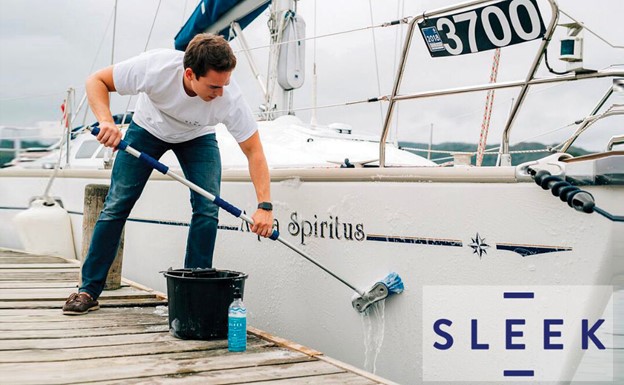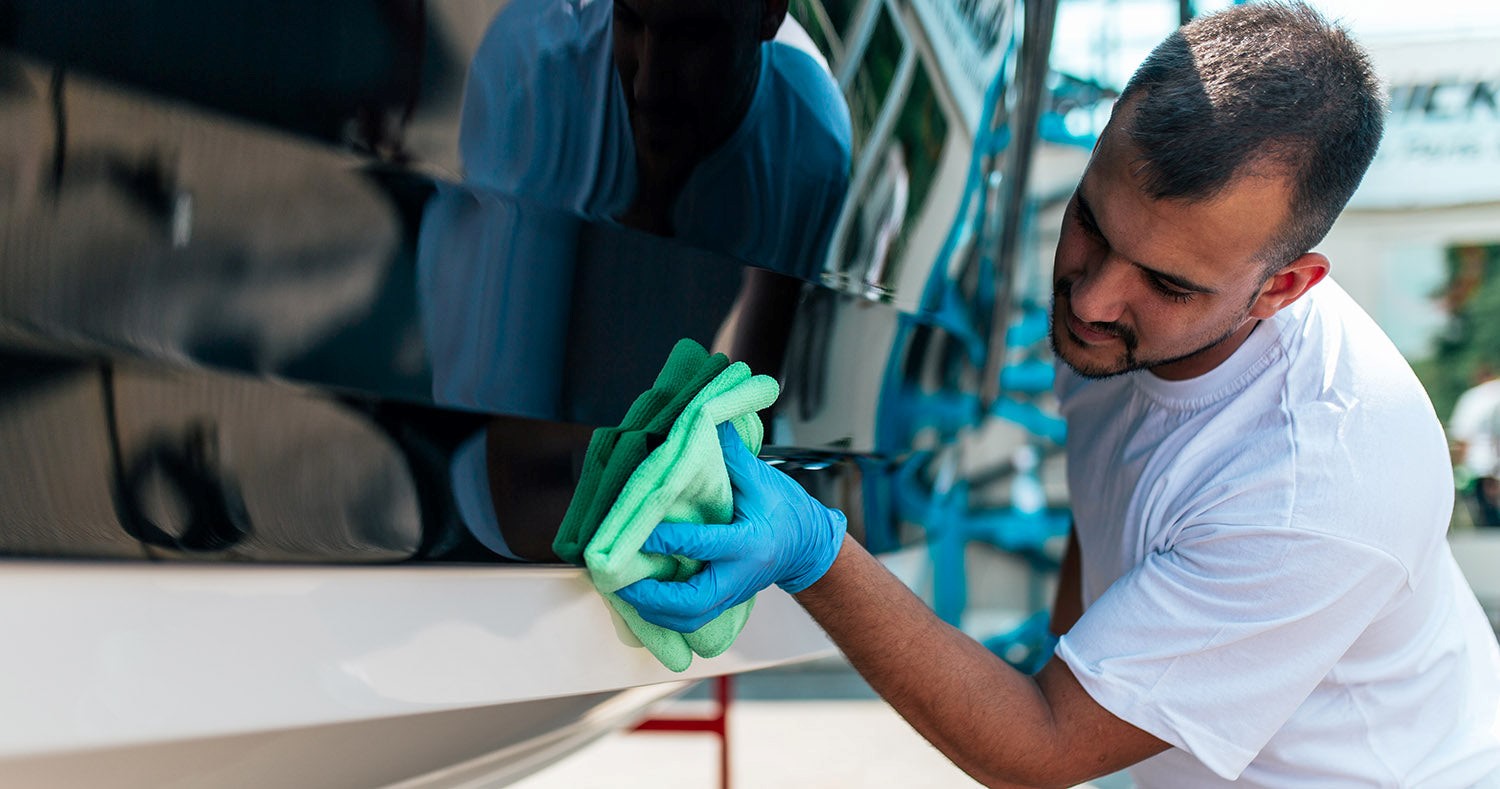
Gel coat restoration is an essential process in Sarasota, Florida for maintaining the glossy and protective outer layer of fiberglass boats, RV, and other composite materials. Over time, exposure to the elements can induce gel coat surfaces to lose their shine and become damaged. This not only affects the aesthetics but also the structural integrity of the underlying material.
In this article, we will guide you through the six essential steps of gel coat restoration to help you breathe new life into your boat or fiberglass equipment. Let’s begin!
What Is a Gel Coat
A gel coat is a type of surface coating applied to fiberglass-reinforced composite materials like boats, RVs, and even some automotive parts. It serves as a protective layer that provides resistance to UV rays, water, and various environmental factors. The gel coat is not only functional but also adds a glossy finish to the surface. However, over time, it can become faded, discolored, or damaged owing to exposure to the elements.
Tools and Materials Needed for Gel Coat Restoration in Sarasota, Florida
To undertake a successful gel coat restoration project, it’s essential to gather the right tools and materials. Here is a list of what you will need:
- Gel Coat Restorer: To restore your gel coat effectively, it’s crucial to choose a high-quality gel coat restorer that matches the color of your gel coat. This product rejuvenates the surface, bringing back its vibrant appearance and providing protection against environmental elements, ensuring longevity and visual appeal.
- Polishing Compound: A suitable polishing compound is essential for eliminating surface imperfections and restoring the shine of your gel coat. This product works by gently removing minor blemishes, oxidation, and dullness, leaving your gel coat with a renewed, glossy finish.
- Buffing Pads: During the gel coat restoration process, different types of buffing pads, such as wool or foam, play a vital role. Wool pad are effective for cutting through imperfections, while foam pads are suitable for finer polishing. The right choice of buffing pad ensure a smooth and well-defined finish.
- Electric Buffer/Polisher: An electric buffer or polisher significantly enhances the efficiency of the restoration process. It enables you to apply products consistently and achieve professional-grade results, making the gel coat restoration process quicker and more manageable, especially for larger surface areas.
- Sandpaper: Fine-grit sandpaper in the range of 1000-2000 grit is indispensable for addressing deep imperfections. This abrasive tool delicately smooths out rough areas without damaging the gel coat further, preparing it for subsequent restoration steps.
- Masking Tape: Masking tape serves as a protective barrier for surrounding areas during the gel coat restoration restoration process. It ensures that the polishing compounds and restorers are applied only where needed, preventing accidental damage to adjacent surfaces.
- Microfiber Cloths: These soft and absorbent cloths are essential for wiping down surfaces and applying products. Their lint-free design helps prevent streaks and smudges, contributing to a clean and polished final result.
- Safety Gear: Your safety is paramount during gel coat restoration. Always wear safety goggles to shield your eyes from debris, gloves to protect your hands, and a dust mask to block inhaling harmful particles. These precautions ensure a safe and healthy working environment throughout the restoration process.
Step-By-Step Process for Gel Coat Restoration In Sarasota, FL

Now that you have your tools and materials on hand, let’s go through the six essential steps of gel coat restoration in Sarasota, Florida:
Step 1: Surface Preparation (Thorough Cleaning)
Start by diligently cleaning the gel coat surface with a mild detergent. This step is crucial as it eliminates any accumulated dirt, grime, or contaminants that may hinder the restoration process. A clean surface provides the ideal foundation for subsequent restoration steps, ensuring the best possible results.
Step 2: Masking (Protecting Adjacent Areas)
Masking is a pivotal part of restoration to protect nearby surfaces or areas you don’t want to affect with restoration products. Employ masking tape to create clear boundaries and safeguard adjacent areas from any potential overspray, accidental contact, or unintended damage, preserving the integrity and appearance of these unaffected regions.
Step 3: Sanding (Addressing Deeper Imperfections)
When dealing with deeper imperfections or scratches on the gel coat, fine-grit sandpaper, typically in the range of 1000-2000 grit, is employed. Exercise caution during this step to avoid overly aggressive sanding, which could worsen the gel coat’s condition. Instead, sand gently to smoothen rough areas and prepare the surface for subsequent restoration procedures.
Step 4: Gel Coat Restoration (Reviving Color and Shine)
The core of the restoration process, this step involves applying a gel coat restorer as per the production label’s instructions. Utilize a buffing pad or an electric buffer to work the restorer into the gel coat. The restorer, specially formulated for gel coats, revitalizes the color and shine, breathing new life into the surface and providing protection against environmental elements.
Step 5: Polishing (Enhancing Shine and Refinement)
To further enhance the shine and address minor imperfections, apply a polishing compound in this step. Depending on the specific requirements, switch to a different buffing pad if necessary. The polishing compound fine-tunes the surface, leaving it gleaming and polished, achieving a high-quality finish.
Step 6: Final Cleaning (Residue Removal and Inspection)
Concluding the restoration process, wipe down the surface with. a clean, damp microfiber cloth. This step serves to eliminate any remaining residue from the previous steps. As you clean, scrutinize the surface for any lingering imperfections. If necessary, consider reapplying the gel coat restorer or polishing compound to ensure a flawlessly restored and polished gel coat.
Conclusion
Gel coat restoration in Sarasota is a rewarding process that can breathe new life into your boat or fiberglass equipment. By understanding what a gel coat is, gathering the necessary tools and materials, and following the step-by-step method outlined in this article, you can revitalize your gel coat’s appearance and protect your investment. With the right care and maintenance, your gel coat will continue to shine, ensuring your boat or fiberglass equipment remains in top-notch condition for years to come.
At the Boat Concierge, we’re here to help you restore and maintain your boat’s beauty. Contact us today for top-notch boat coating and maintenance services to keep your vessel looking its best.



